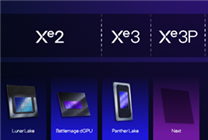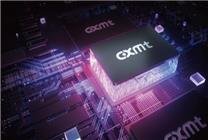Intel’s Panther Lake: Confusion in Graphics Card Naming
Summary
- Intel’s Panther Lake integrates the new Xe3 architecture, yet retains the Ruixuan B series name, leading to confusion.
- The distinction between independent graphics and core graphics progress remains unclear.
- Future developments may further complicate Intel’s graphics naming conventions.
Intel has recently revealed that its Panther Lake processor is the first to feature the next-generation Xe3 architecture integrated into its GPU core display. However, the naming conventions associated with this new technology appear to be muddled, as it continues to be categorized under the Ruixuan B series, commonly associated with older Xe2 architecture.
Currently, the Ruixuan B series, which includes independent graphics card models such as the B580 and B570, is exclusively based on the Xe2 architecture. The introduction of the Panther Lake core display, featuring a revamped architecture, logically suggests that it should be aligned with the Celestial C series instead. The existing nomenclature raises questions about where future Xe3P architecture products will fit into this framework.
Confounding Naming Practices
Tom Peterson, an Intel graphics technology lead, has candidly acknowledged the complexities surrounding Intel’s graphics card naming conventions. He emphasized that retaining the Ruixuan B series designation for the Panther Lake graphics is a strategic move to build upon the successful track record of the B580 model. However, he also indicated that Intel is not yet ready to implement the Ruixuan C series naming system, which is reserved for the next-generation Xe3P architecture. This decision only adds to the confusion, as it implies that Xe3P architecture products will be exclusively classified under the Ruixuan C series.
The Challenge of Synchronization in Graphics Development
One of the core issues that appears to contribute to this naming chaos is the evident disparity between the advancements in Intel’s independent and core graphics lineups. The current landscape shows a significant gap, particularly as the Ruixuan B series independent graphics has only introduced two mainstream models thus far. This lack of a complete lineup, spanning high-end to entry-level options, raises questions about the future of the B series, especially in light of architectural upgrades being rolled out in core graphics.
It’s also uncertain where the Xe3P architecture will be implemented going forward. Expectations are that it will be associated with the upcoming Nova Lake core display, while independent graphics may remain in limbo for a longer period.
Intel earlier presented the fourth-generation Druid architecture, which offers some hope for clarity in the future. Nonetheless, the road ahead appears to be fraught with uncertainty regarding product classifications and underlying technology.
Conclusion
As Intel navigates the evolving landscape of graphics technology, the confusion surrounding its naming conventions is likely to persist. The retention of the Ruixuan B series title for Panther Lake raises essential questions about future product lines and the logic behind the company’s classification strategies. Without clear differentiation and synchronization between architecture versions, consumers may find it increasingly difficult to make informed choices in the graphics marketplace.
In summary, as Intel continues to innovate, it would benefit from a more straightforward naming framework that aligns with industry standards and consumer expectations. This move could ease confusion and help solidify Intel’s position in the competitive graphics market.
Key Takeaways
- The naming complexities within Intel’s graphics card lineup create hurdles for consumers.
- Synchronization between independent and core graphics developments remains crucial.
- Future product classifications will need to prioritize clarity to enhance consumer understanding.
By addressing these discrepancies, Intel can foster a more accessible and user-friendly experience for its customers while reinforcing its reputation in a rapidly evolving technology landscape.










